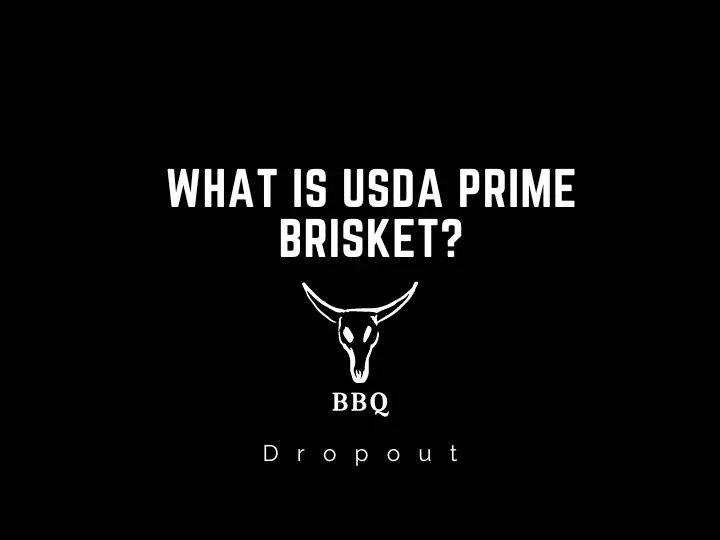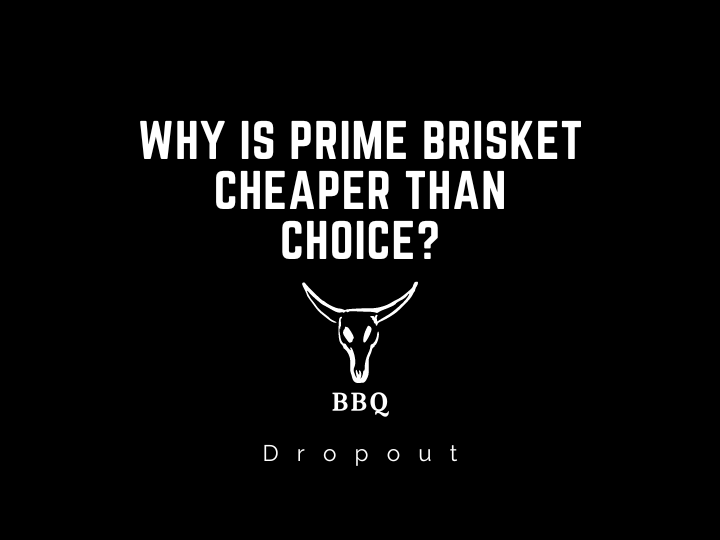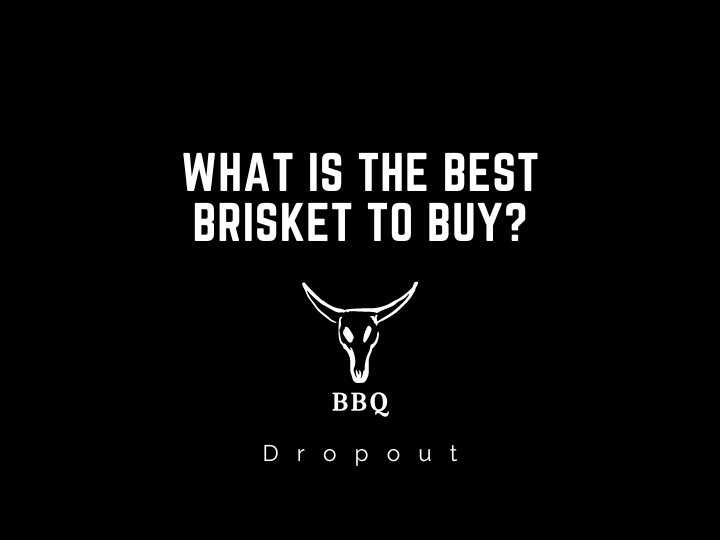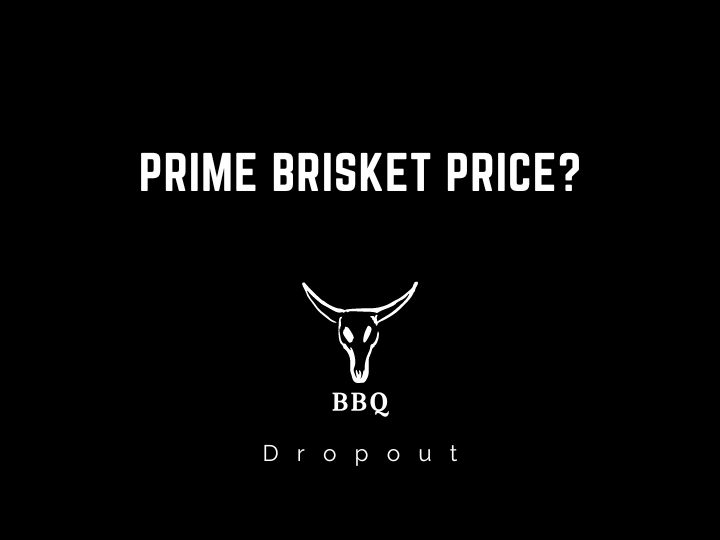We strive to provide you with authoritative, trustworthy, and expert advice. In doing so, the staff at bbqdropout.com performs extensive research, editing, and fact checking to every post on this webiste. If you feel that this article can improve, please feel free to reach us at staff@bbqdropout.com
Before continuing this article, I wanted to let you know that I have a YouTube channel where I showcase all sorts of video content related to BBQ. Subscribing would mean a lot to me, and I very much appreicate all the support!
What is USDA Prime Brisket? I’m glad you asked! Get ready. We’re going to be covering the following topics:What is USDA Prime Brisket?
What is USDA Prime Brisket?

That’s a very good question! Only the best piece of meat in the WORLD. This is actually a highly sought after topic, as you can see from the list above. Frankly, it doesn’t even begin to scratch the surface of all things Brisket. Let alone Prime Brisket.
There’s just so much that goes into picking the right sized cut of meat, how to cook it, equipment involved, the list goes on!
Now, in case you were wondering … a USDA Prime Brisket is one of the best grades you can possibly buy from a grocery store.
How is that?
Simple. The fat contents. Ever heard of marbling? That just means there is a lot of interconnected fat between the muscle fibers in the meat. Basically, the cow was really fat and juicy!
Cool. So, what is USDA?
USDA in this context stands for the United States Department of Agriculture.
It is an official attestation to you, as the customer, that any cut of meat you are about to buy is effectively certified by a governing agency. Think of it as the government’s seal-of-approval.
Not that you always need government approval, but it’s just a way of implementing relatively strict standards for meat processing.
In that respect, a USDA Prime Brisket is truly one of the best tasting, tender, and forgiving pieces of brisket.
Granted, Brisket is generally coveted as one of the more difficult pieces of barbecue to get right.
That being said, getting a Prime Brisket will generally speaking will be a lot easier to cook properly rather than a lesser grade such as Choice and Select. This is due to the fat contents.
Can I please see a picture of a Prime Brisket?
You sure can! Here you go:

Is Prime Brisket worth the money?
You know, i’ve often wondered that very question myself. Short answer is yes. Long answer is … it depends. When I first started barbecuing, I was a broke college kid working a job at HEB (local grocery store here in Texas).

Not having a ton of money – I started at the absolute bottom of the barrel. My brisket career began with a Select Grade cut of brisket. The very first cook with it was miserable too. It took over 24 hours and the thing just came out SO dry.
That wasn’t the last time I ever smoked a Select Grade brisket, but I definitely try to only go for Prime now.
yeah but, why is that?
I’ll tell you why. Prime Grade brisket is generally a fattier piece of meat. Having a fat piece of barbecue will only make things taste better and is generally very forgiving.
Brisket is already a finicky enough cut as it is, and by getting one with plenty of marbling – you will effectively be creating some amazing barbecue.
That being said, they can be fairly pricey. The averaged size brisket you will see here in the great state of TEXAS is on average between 10lbs-20lbs.
That is a LOT of meat! Even though the price is relatively low compared to something like a Ribeye, due to the large quantity – you will be paying roughly $40-$50 per brisket in that pound range.
Don’t worry though, it’s literally an almost 20lb piece of meat. Think about how long that will last you. No joke – a brisket can last you the entire week. Plus it tastes AMAZING!
Why is Prime Brisket cheaper than choice?
Is that really the case?

Sometimes it may seem like it is! However, you have to realize what you are comparing.
Simply saying prime is cheaper than choice opens the door for more questions. You also have to check if you are really comparing the exact same CUT of brisket.
What do you mean by CUT of brisket?
What I mean is … Brisket is generally sold in a variety of formats, other than just the grade of fat contents. I told you these are loaded questions!
To get a better understanding of the different cuts of brisket please see the following:
- Brisket Packer
- Brisket Flat
- Brisket Point
- Brisket Burnt Ends
These are generally the most common forms of brisket that you will either hear about or come across.
Brisket Packer
A Brisket Packer is the whole brisket. This means the flat, point, and burnt end portions are all included. This is the most famous cut of brisket and will be primarily what you will see talked and posted about in this blog. The brisket is actually a combination of two muscles – the point and flat. The point is the meatier and fattier portion while the flat is the leaner and lesser part of the overall brisket.
Brisket Flat
The brisket flat is, like I said, the leaner portion of the brisket. It’s also the most prone to going dry, so watch out for that! It really takes a true pit-master to not only make sure it comes out alright, but to ensure all areas of the brisket are well taken care of. You will find brisket flats all around the grocery store much like you would a packer style brisket. The difference is just – what part you want the most.
Brisket Point
The brisket point is honestly my favorite part of the meat. That’s simply due to the amount of flavor, fat, and tenderness that comes with it. The Point of a brisket, notably a USDA Prime Brisket, will provide you with the upmost flavor. It’s almost too overwhelming and rich, but will certainly be one of the most amazing pieces of meat you will EVER experience.
Brisket Burnt Ends
Brisket burnt ends are another great delicacy. They are essentially the brisket point – cubed up into smaller pieces called ‘ends’ and are thrown back onto the smoker (or whatever cooking device you are using) for maximum fat caramelization. Yes, they are quite amazing. Usually you have to make them yourself since most grocery stores don’t cater to that specific palate. That being said, they are definitely.
That should all clear things up regarding the different CUTS of brisket. Now, let’s revisit the overarching question:
Why is prime brisket cheaper than choice?
The answer would depend on whether or not you are actually comparing the same cut of brisket. Meaning, are you comparing two brisket packers together?
Or are you comparing a USDA Prime Grade Packer Brisket which a Choice Grade Flat?
See the difference?
Generally speaking, the divided up portions of the brisket will be more expensive on a per pound basis regardless of the Grade you select. This means that the Packer style briskets will be cheaper overall on a per pound basis than a separated flat, point, or burnt ends style brisket.
How do you pick a Beef Brisket?
This can be harder than it seems … but don’t worry – i’ll tell you how!

Just make sure that you head on over to your local grocery store – in my case, that is H-E-B. Walk over to the meat market display and see what’s available. For the purpose of this post, we’ll be discussing how to select a USDA Prime Brisket. Take a look at what you have at your disposal – how many briskets are there in the case? Sometimes here in Texas most of the good quality briskets are all picked over!
This means that what I would commonly have to do, especially around any important holiday – is to get there early. YUP that is a pro tip. Let me reiterate:InfoWarningTip
To get the best selection of USDA Prime Brisket – Get to the store early!!
Most meat markets will actually get shipments everyday – early in the morning. Getting to the store right as they open will simply ensure that you have the best possible selection. For other cuts of meat such as Picanha, the same method applies. If you don’t know what Picanha is or how to smoke/cook one, checkout my previous blog posts where I shed some light on that here:
At this point in the process, you have gotten to the store and ensured you have maximized the possibility of you finding the perfect Prime Brisket. That’s GREAT! But not all it takes.
You’ll see very quickly that there are a lot of different sized briskets, each with varying degrees of marbling, and packaging. Some look fresh and red – and some look loosely vacuumed sealed. You definitely don’t want one that is loosely sealed. You also don’t want one with an uneven thickness. What I mean by that point is that you should be checking to see if both sides of the meat are in proportion to one another. A Prime Grade Brisket with a huge point but a little tiny flat is probably not one you want to be smoking. Other wise you will way over cook the flat before you ever are able to cook through the point. Mind Blown!
There’s even another factor that goes into selecting the correct brisket – the bend test!
What in tarnation is the bend test?
This is a term applied to two different stages in the brisket process – selecting and assessing the finished product. For purposes of this post, I’ll just focus on the first meaning – The bend test. When selecting the most epic Prime Grade Brisket is when you have determined it is of excellent marbling, thickness, and proportion. A combination of all three of these very important selections will let you place the brisket over your hand (you have to be strong since it’s a potentially 20lb piece of meat) and let it bend over both sides of your hand. This will attest to the true fat and protein ratios present within.
What is the Best Brisket to Buy?
The best brisket to buy, is generally speaking one that you can afford and that will give you the best end product. It’s really a combination of those two factors. Believe me, I understand how expensive a single cut of brisket can cost. Especially a Prime Grade Brisket.
You know what? Let me write a separate post specifically around this topic:

Take a gander at the above post. Essentially what you want to look at your budget. What amount of money are you able to expend for an amazingly marbled Prime Grade Brisket? Once you have determined that important factor – take a look at what grade of brisket you are interested in. Generally, I only buy USDA Prime Grade Brisket. That isn’t because I am a BBQ Snob, it’s because I really enjoy all of the marbling that comes with it.
Prime Brisket Price?
There are varying degrees in price ranges for brisket. The difference in prices are generally from the different grades of brisket you can pick up, the difference in weight, and the different stores selling briskets.

For more information into this subject, reference this blog post:
The prices across the board all vary to a significant degree. This is even more true when considering specifically USDA Prime Grade Brisket. In my situation, a recent look at some briskets at H-E-B (again, my local grocery store) was roughly $3 per lb! This doesn’t seem like a lot, but when multiplying that by the average weight of the meat – 15-20lbs – it can definitely add up.
Let’s use an example of taking a USDA Prime Grade Brisket that weighs 15lbs and cost about $3 per pound:
15lbs X $3 per Pound = $45This may not seem like a lot, but if you are catering for a large crowd – this can certainly add up. That’s why it’s important to consider the three main points laid out previously:
- Your budget
- Grade of Brisket
- Where you are sourcing your brisket
For more information into this subject, reference this blog post:
Robert is a certified Pitmaster, with over a decade of experience in smoking the best meats you’ll ever feast upon. He also has a Bachelor of Business Administration from the University of Texas at San Antonio. When he’s not researching technical topics, he’s most likely barbecuing in his backyard.
